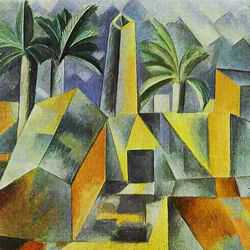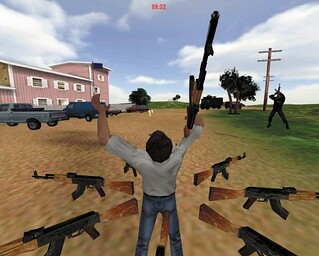What does the term Avant-Garde mean?
Avant-Garde means to be innovative and original; to challenge existing ideas and to push the boundaries of creativity. It praises exploration and experimentation, and promotes the belief that art should be primarily judged on the originality of the artist’s visions and ideas. Works that take an Avant-Garde approach can sometimes cause controversy as they often express radical ideas by going against widely accepted existing ones, Cubism for example, a revolutionary approach to portraying reality in the 20th century.
Is it still possible to be truly ‘avant garde’? and if so provide game examples
I believe it is very possible, as there is plenty of space left for new and innovative ideas, especially with the technological advancement that allows some of these ideas to be developed. An example is the third-person game Waco Resurrection, created by designers at c-level in 2004, designed to be exhibited in a gallery setting. It takes the subject of the 1993 Waco siege, in which government agents were sent into the Branch Davidian cult compound. Controversially you play as the cult leader, David Koresh, with your aim being to defend the compound against the government agents using the weaponry at your disposal. Players are also required to wear custom helmets designed for the experience, which are modelled to look like low-polygon versions of David Koresh. The purpose of this is to increase the immersion for the player but also to hide the identity of the player for spectators, which add mysterious and disturbing elements to the experience. Players are also equipped with a microphone to voice commands in the game for special abilities.
As can be expected due to the shocking nature of the game, there were criticisms directed towards the game, mainly to point out that the game was in bad taste and exploitative. A reason for this could be that some people fail to consider that games can be used to teach about serious issues, or that perhaps they are used to the protagonist in a game being a hero. These criticisms show that this game was successful in defying the normal conventions of games.
Another example is The Witness, a 3D puzzle game released by Jonathon Blow in 2016. Set on a remote island with no other living humans around, the player progresses by completing puzzles on a grid and finding secret paths hidden in the environment. The game is not for everyone as there are absolutely no instructions; the player must understand what they have to do through working it out themselves through either trial and error or piecing together subtle hints in the environment. To solve the majority of the puzzles it helps considerably to use pen and paper or other similar tools; the suggested use of external materials shows that this is not a typical game. The game challenges conventions of modern gaming as in the past couple decades there has been an increasing reliance on tutorials and “helping hands” to help players understand game mechanics.
Isbister, K. (2016). How Games Move Us. London: The MIT Press, pg 13-17.
Tate. (n.d.). Avant-Garde. Retrieved from Tate: http://www.tate.org.uk/art/art-terms/a/avant-garde
Tate. (n.d). Cubism. Retrieved from Tate: http://www.tate.org.uk/art/art-terms/c/cubism
Widewalls. (2016). Understanding the Significance of Avant-garde. Retrieved from Widewalls: https://www.widewalls.ch/avant-garde-movement-theater-music-photography-contemporary-art/
Image 1: https://www.artyfactory.com/art_appreciation/art_movements/cubism.htm
Image 2: http://eddostern.com/works/waco-resurrection/


